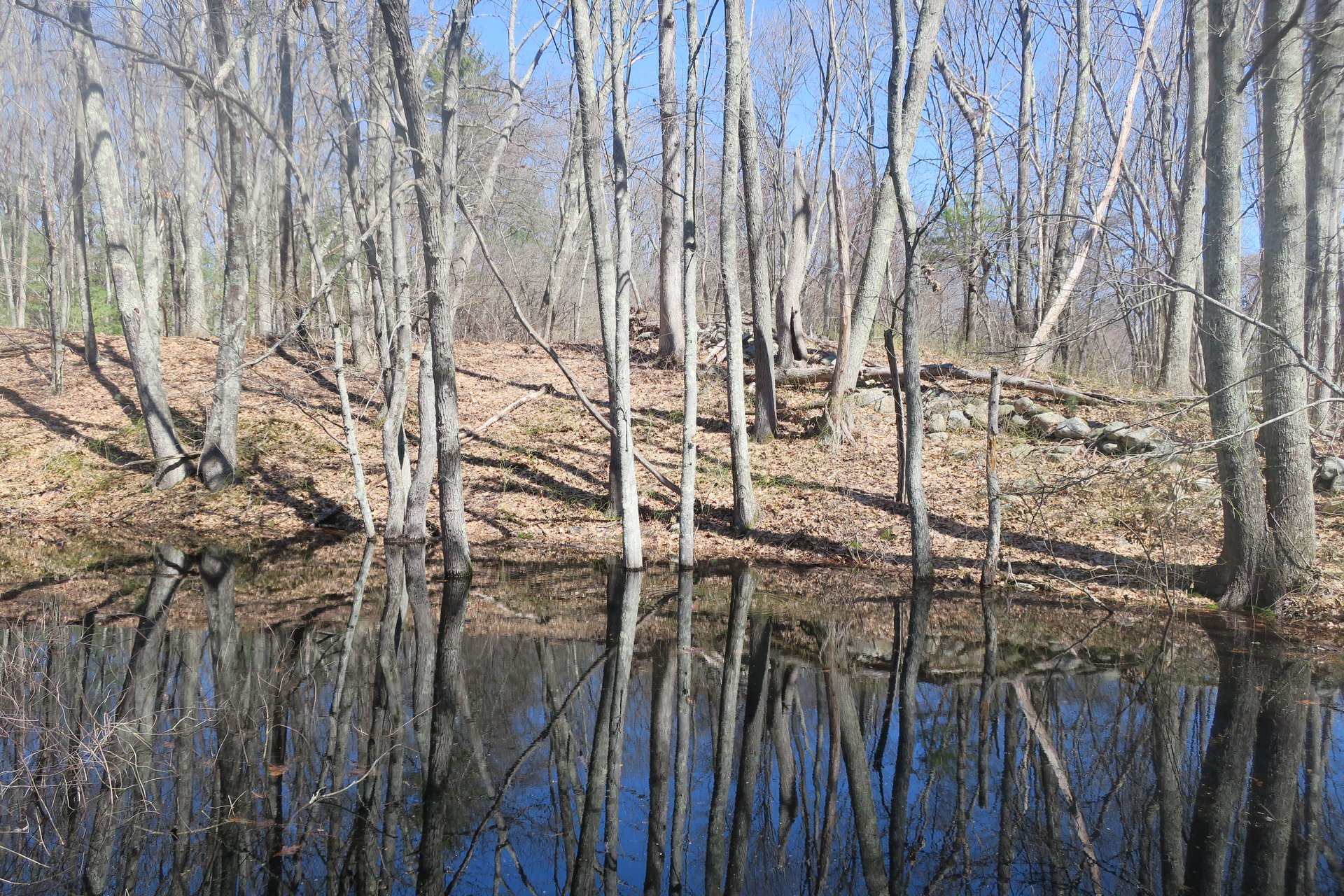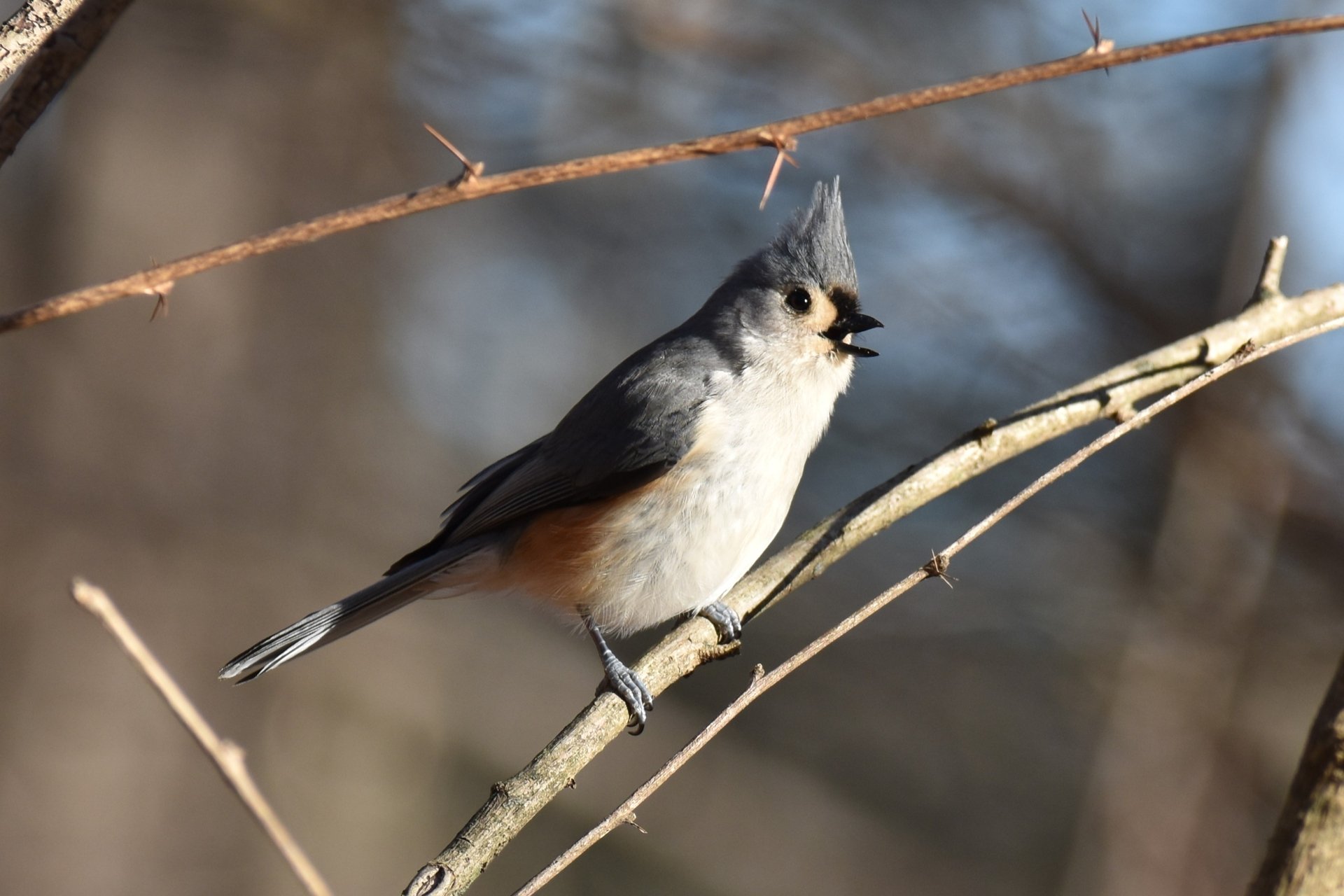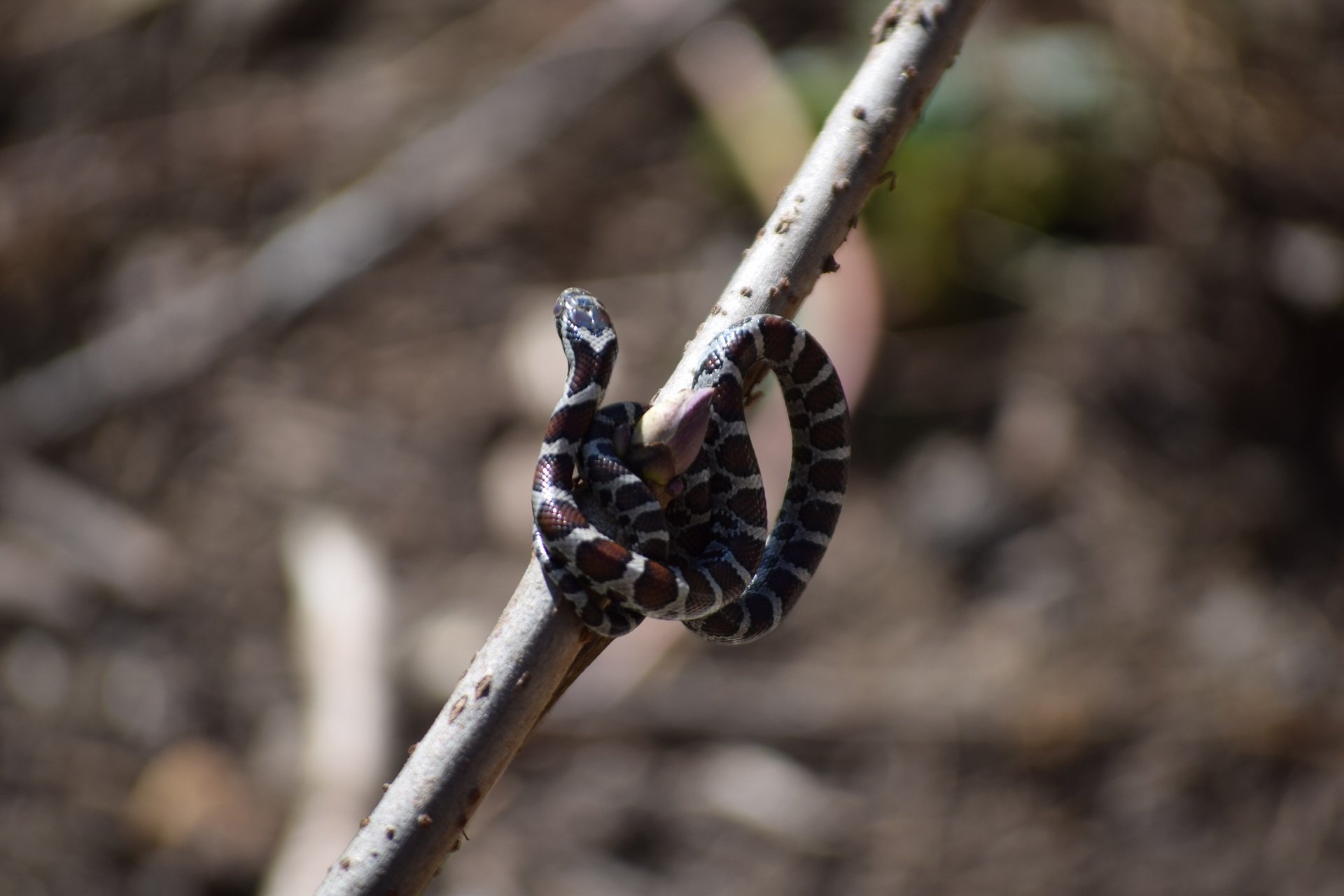Reptiles & Amphibians
Vernal Pools
At winter's end, woodland hollows and low areas flood, creating temporary isolated pools. The resulting vernal pools fill with melting snow, spring rain, runoff, and rising groundwater. These pools provide critical breeding habitat for several amphibian and invertebrate species with life cycles that have adapted to these rich, temporary phenomena.
Vernal pools are found in woodlands, meadows, floodplains, and even sandplains all across Massachusetts. They occur in a wide variety of settings including swales, kettle holes, old stream channels, and depressions in larger wetlands.
Wildlife of Vernal Pools
Vernal pools provide unique habitat to specialized species. Some animals live in vernal pools year-round, and so must be able to withstand a wide range of conditions from saturated with water to bone-dry or frozen.
Easily identified by their dark masks and loud quacking, the Wood Frog (Rana sylvatica) migrates on rainy spring nights to vernal pools to breed. After mating and laying eggs, the adults return to higher ground.
The aptly named Fairy Shrimp (Eubranchipus vernalis) are crustaceans who seem to have magic survival powers. They hatch and develop early in the season, before most predators arrive. Their hardy eggs stay in the pond's dry sediment, resistant to drought and cold, and can even survive being ingested and then eliminated by animals.
You are far more likely to hear the sharp peeping call of the tiny Spring Peeper (Pseudacris crucifer) tree frog, than to see one. Though they're only about an inch in size, their calls carry for a quarter-mile.
Spotted Salamanders (Ambystoma maculatum), named for their distinctive yellow spots, live in woodlands. On rainy early-spring nights, they migrate up to a half-mile to breed in vernal pools. They gather in a congress–a pool of mating spotted salamanders.
Caddisfly Larvae (class Insecta, order Tricoptera), like numerous other insect larvae, thrive in vernal pools but can also breed in other wetlands. Caddisflies construct their own protective cases from stems, leaves, and woody material.
Protecting Vernal Pools
Vernal pools are extremely vulnerable to development. They are often overlooked when wetlands are identified on development sites because in many months these areas are dry and resemble the surrounding woodland.
Even if a vernal pool itself is saved from destruction, changes in the surrounding upland may disrupt the habitat and life cycles of the resident species. The removal of the surrounding forest during the construction of houses, driveways, and lawns, for example, may degrade a nearby vernal pool to such an extent that the amphibian population is eliminated.
Wetland Protection
Vernal pools are technically protected under the Massachusetts Wetlands Protection Act if they meet the definitions of "wetlands" under that law. "Wetlands" include vegetated wetlands bordering on water bodies, areas within 200 feet of a river (25 feet in certain urban areas), and lands subject to flooding.
If a vernal pool lies within a recognized wetland, it receives the same protection as the remainder of the wetland and may be protected as an important wildlife habitat feature of that wetland resource area. Evidence can be presented during the permitting process to document the existence of vernal pool habitat and other critical wildlife habitat features within wetland resource areas.
However, alterations and destruction of wetlands may be allowed under various regulatory provisions. Anyone can file a "Request for Determination of Applicability" with the local conservation commission to find out whether or not an area is a protected wetland.
Isolated, uncertified vernal pools are given limited protection under the Massachusetts Wetlands Protection Act. Isolated vernal pools that hold less than one-quarter of an acre-foot of water are not protected by state law unless the area is part of a larger wetland system. These areas may be protected, however, under local wetlands bylaws.
Local bylaws can, for example, make the presumption of vernal pool habitat based on certain physical characteristics, leaving it incumbent on a developer to prove that the area does not actually support vernal pool-dependent wildlife. Local bylaws can also increase the amount of protection for buffer areas around vernal pools, compared to the limited buffer zone protections provided through state law.
Certifying Vernal Pools
Certification is one of the best ways to protect vernal pools. Vernal pools are a severely threatened resource in the state and are only given the highest level of protection under the Massachusetts Wetland Protection Act if certified.
If building is proposed on a site, both developers and the local conservation commission will know about all certified vernal pools on the site. Then, the developers can take this into account when they are drafting their plans, and conservation commissions can ensure maximal protection for the vernal pools through the permit ("Notice of Intent") review process.
Certification also protects vernal pools through the federal Clean Water Act and the associated state Water Quality Certification Program. Under the Massachusetts 401 Water Quality Certification Program if the area qualifies as a federal wetland (contact the Army Corps of Engineers for information on federal wetland determinations). Under the Massachusetts 401 Water Quality Certification Program, new direct discharges of fill or stormwater to certified vernal pools are prohibited.
Anyone can help certify vernal pools (as wildlife habitat) by gathering information and submitting it to the Massachusetts Natural Heritage and Endangered Species Program. Here’s how:
- Locate the potential vernal pool. Remember to secure permission from landowners before undertaking exploratory hikes.
- Log-in to the State's Vernal Pool & Rare Species (VPRS) Information System and submit the online vernal pool certification forms.
The timing of certification efforts is critical. Certification efforts should occur well in advance of a development proposal in order to be most effective.
Land Protection
In addition to certification, citizens and conservation commissions should target forested uplands around known vernal pools as priorities for land protection through acquisition, conservation restrictions, or voluntary landowner land management agreements. Local bylaws can protect small vernal pools that do not qualify for state or federal protection but are nevertheless biologically important.
The best time to see a vernal pool is spring. Watch for tiny tadpoles swimming about, camouflaged masses of frog or salamander eggs, or delicate fairy shrimp safely sheltered under submerged leaves.
You'll catch a glimpse of a magical and critical part of the seasonal cycles of New England, and come away with a better understanding of why we need to protect the nature of Massachusetts.
Sanctuaries with Vernal Pools
Many of Mass Audubon wildlife sanctuaries are home to vernal pools, including:
Broadmoor, Natick
Drumlin Farm, Lincoln
Ipswich River, Topsfield
Moose Hill, Sharon
Stony Brook, Norfolk
Attleboro Springs, Attleboro
Oak Knoll, Attleboro
Ashumet Holly, Falmouth
Broad Meadow Brook, Worcester
Lincoln Woods, Leominster
Arcadia, Easthampton & Northampton
Pleasant Valley, Lenox
Listen to the Sounds of a Vernal Pool
Stay Connected
Don't miss a beat on all the ways you can get outdoors, celebrate nature, and get involved.






